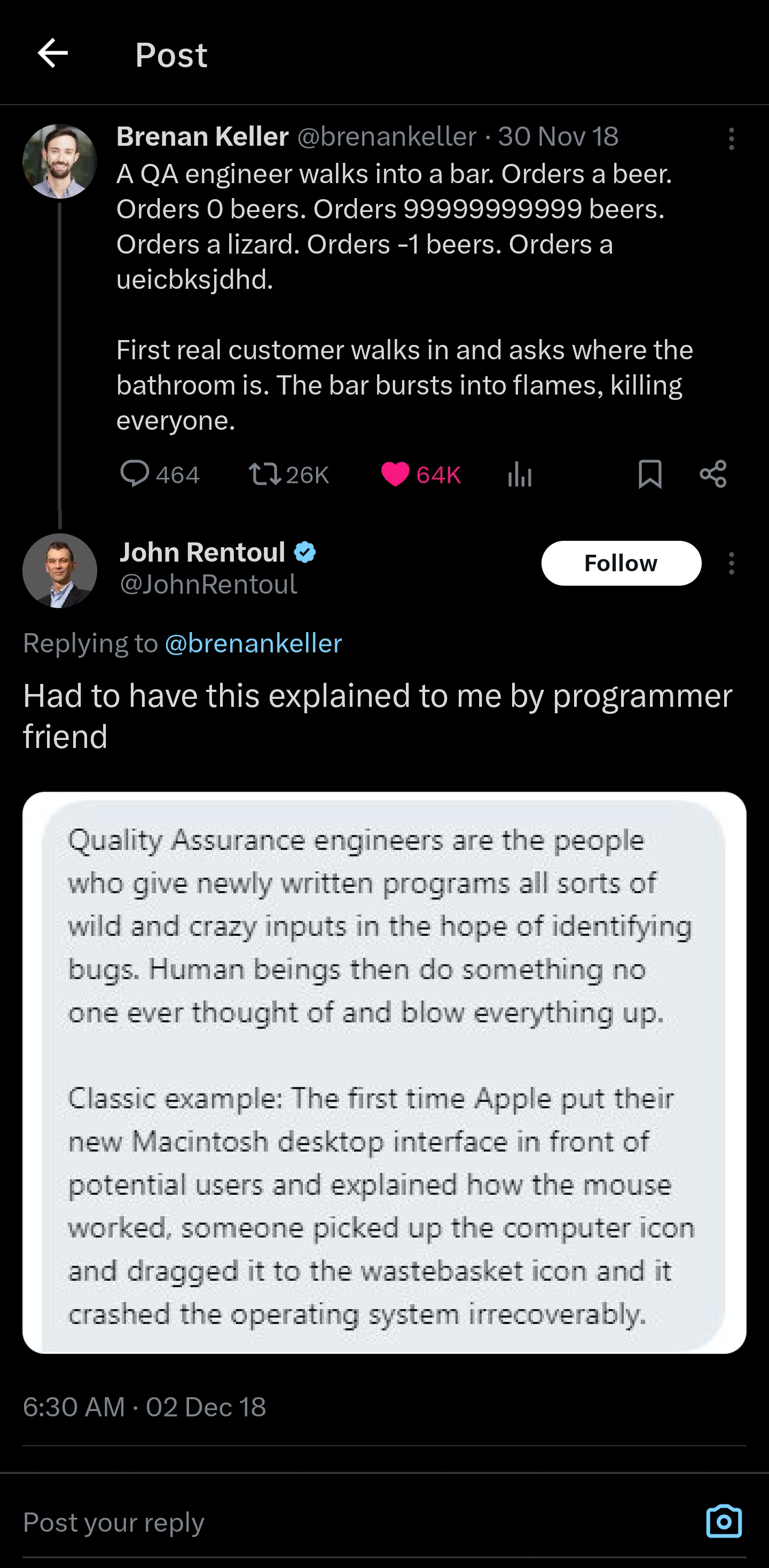this post was submitted on 10 Apr 2024
1702 points (99.0% liked)
Programmer Humor
32469 readers
488 users here now
Post funny things about programming here! (Or just rant about your favourite programming language.)
Rules:
- Posts must be relevant to programming, programmers, or computer science.
- No NSFW content.
- Jokes must be in good taste. No hate speech, bigotry, etc.
founded 5 years ago
MODERATORS
you are viewing a single comment's thread
view the rest of the comments
view the rest of the comments

Let me guess; does it recursively remove all permissions from the file system?
The command in question recursively changes file ownership to account "user" and group "user" for every file and folder in the system. With linux, where many processes are run as root and on various other accounts (like apache or www-data for web server, mysql for MySql database and so on) and after that command none of the services can access the files they need to function. And as the whole system is broken on a very fundamental level changing everything back would be a huge pain in the rear.
On this ubuntu system I'm using right now I have 53 separate user accounts for various things. Some are obsolete and not in use, but majority are used for something and 15 of them are in active use for different services. Different systems have a bit different numbers, but you'd basically need to track down all the millions of files on your computer and fix each of their permission by hand. It can be done, and if you have similar system to copy privileges from you could write a script to fix most of the things, but in vast majority of cases it's easier to just wipe the drive and reinstall.
I am so grateful for snapshotting file systems like ZFS. Restore the last working snapshot and continue on.
Recursively changes ownership of all files to the user, which breaks tons of system processes